Why Your Guinea Pig’s Urine Is White?
A healthy guinea pig’s urine should be clear. When your piggy’s pee changes its shade to white or cloudy, it may or may not be a symptom of an underlying health issue.
If you are wondering why your guinea pig’s urine is white, keep reading. In this post, we are going to discuss everything you need to know about the problem.
Why Your Guinea Pig’s Urine Turns White?
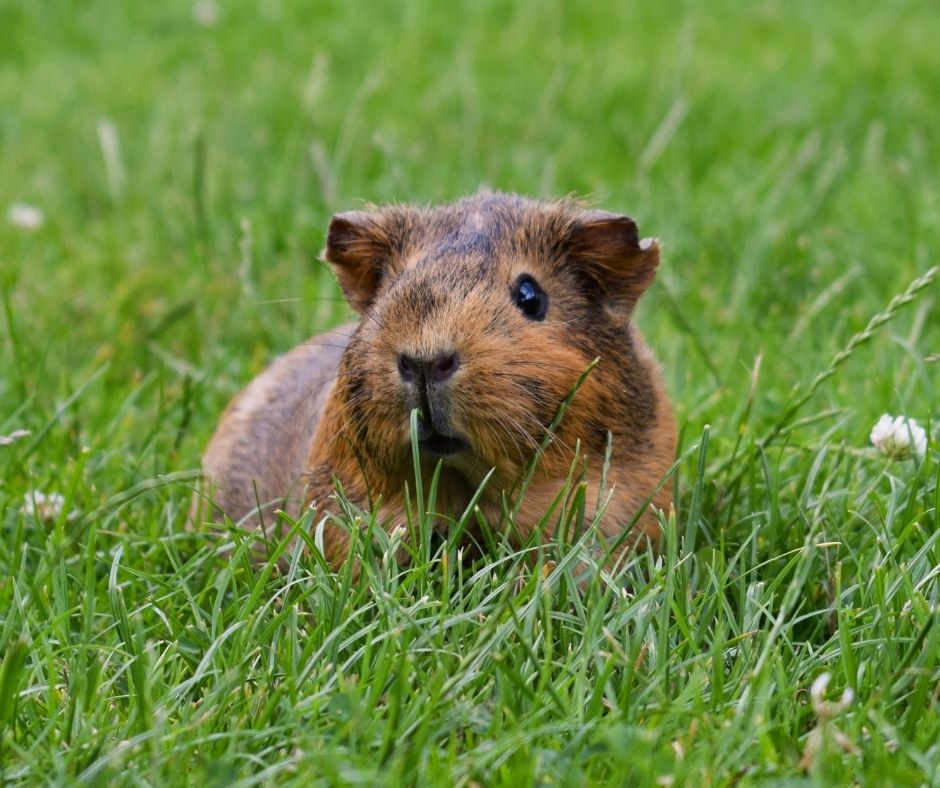
In general, calcium carbonate and ammonium phosphate crystals are responsible for the white shade. For young guinea pigs, excreting excess calcium via urine is normal.
In most cases, you can treat the issue just by eliminating or reducing a calcium-rich diet. If the condition goes untreated for a long time, your piggy can get bladder stones.
Sign of Excess Calcium or Bladder Stones
Here is an easy way to tell if your guinea pig’s white pee is a sign of excess calcium or bladder stones. When the pee dries up leaving a powdery substance, notice it.
If the powder is fine, the white urine is normal. But if the powder is gritty like sand, most probably it is a sign of bladder stones, also referred to as uroliths.
If the bladder stones become larger and get stuck in the urethra, they can cause irritation and pain, and even prevent your piggy from urinating. In some cases, guinea pigs with uroliths urinate blood.
To diagnose the problem, you should ideally have your guinea pig checked by a vet.
Causes of Excess Calcium or Infection In The Urinary Tract
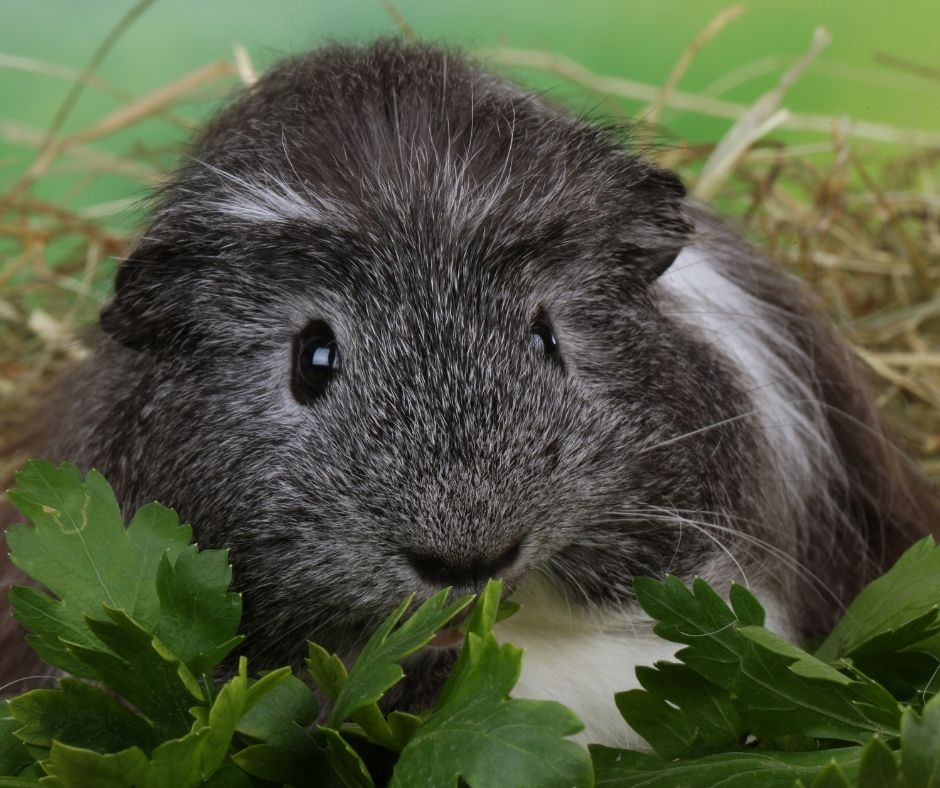
The main reason your guinea pig’s urine is white or cloudy is that the animal’s diet contains an excessively high amount of calcium.
When the body is unable to absorb this excess calcium, it is excreted through the urinary system. If this condition goes on for a long period of time, your piggy may get uroliths, which can lead to more complicated health problems.
White or cloudy urine can also be caused by an infection in the urinary tract. Female guinea pigs are more likely to develop urinary tract infection because they have shorter urethras than other mammals.
The most common signs of this condition include inappetence, high fever (up to 104ºF), dehydration, blood in urine, lethargy, and squeaking when urinating. Multiple bacteria can cause urinating tract infections.
How To Decrease Calcium in Guinea Pigs Diet
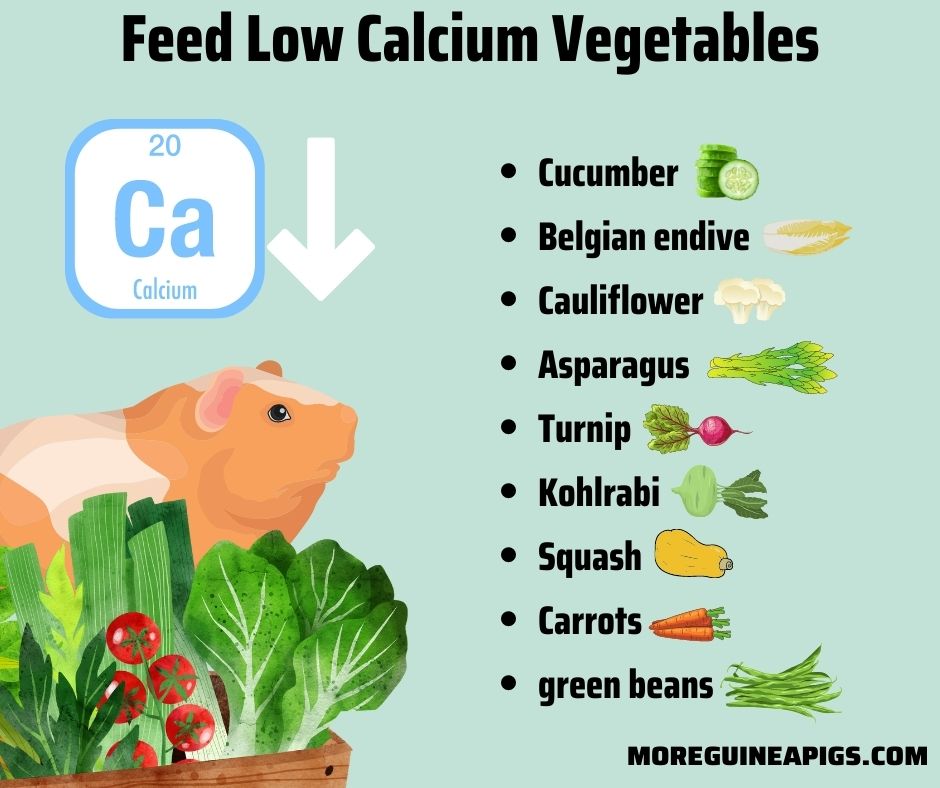
When excess calcium is an issue, don’t take any drastic measure to resolve the issue. Instead of eliminating calcium altogether from your guinea pig’s diet, find ways to reduce your piggy’s calcium intake.
Replace the hay with high fiber timothy hay, provide enough hydration, and feed low calcium vegetables such as beets, cucumber, Belgian endive, cauliflower, asparagus, turnip, kohlrabi, squash, carrots, alfalfa sprouts, parsnips, lettuce, sweet potato leaves, and green beans.
Avoid vegetables that are high in calcium, such as beetroot, spinach, parsley, and dill. Reduce the consumption of pellets. Make sure it does not exceed 1 tablespoon per piggy per day. And avoid pellets that have more than 0.6% calcium.
Also, Your piggy should drink only soft water. If there is hard water in your house, consider filtering the water. As a rule of thumb, you should offer your guinea pig the same type of water that you drink.
However, if you are using water softener, talk to a veterinarian before you offer the water to your piggy.
For guinea pigs, the best drink is clean water with nothing added to it. Make sure your guinea pig drinks at least 100 ml of water daily. Use an inverter glass water bottle and replace the water multiple times a day.
What Does a Healthy Guinea Pig’s Urine Look Like?
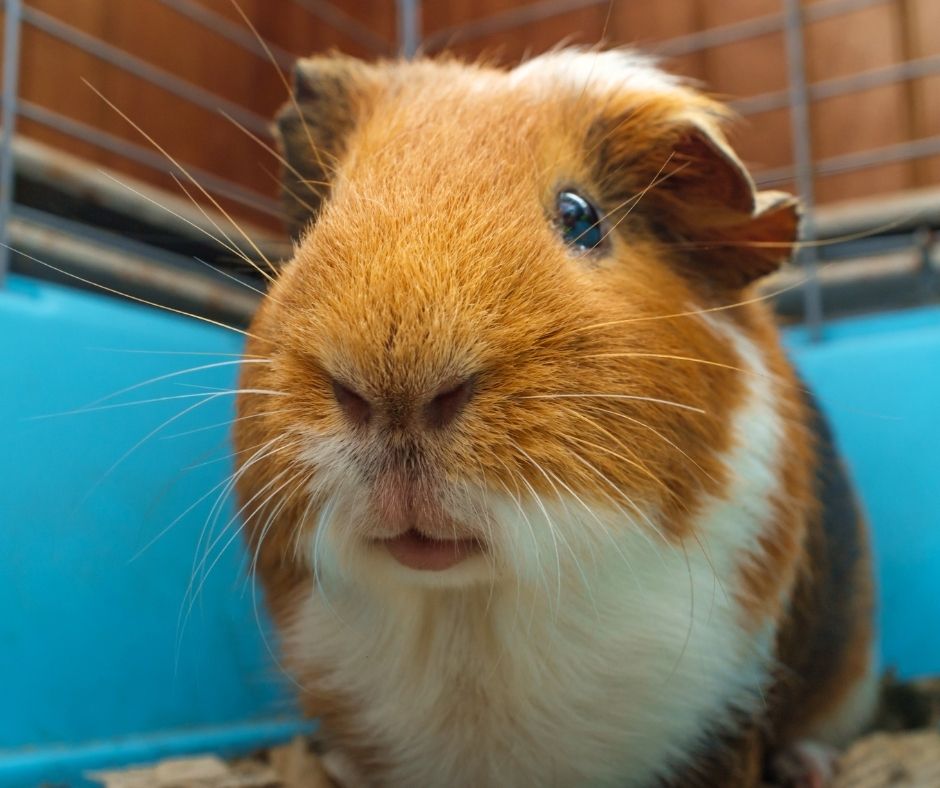
In general, a healthy guinea pig’s urine looks clear, but it is not uncommon to be pale, cloudy, yellow, or white. That means, your guinea pig may be healthy even if its urine is not clear.
If a guinea pig is very young, a whitish or brownish tint to the urine is usually normal. However, it can be a sign of an underlying health problem, and that’s why you should take the issue seriously.
A guinea pig’s urine turns cloudy if it contains excessive amounts of calcium compounds. If the urine looks pinkish or red, it is probably because the urine contains blood.
Gritty compounds in the urine may indicate sludge in the bladder. In contrast, powdery deposits are normal. If there is blood in the urine, it may be a sign that your piggy is suffering from an urinary tract infection.
Lixit Glass Water Bottles for Small Animals and Birds
Different Color of Urine
The color of a guinea pig’s urine can change from time to time, even if the animal is healthy. However, just by looking at the shade of the urine, you can learn about the overall health of your piggy. Let’s dive in:
Clean and transparent: If your guinea pig’s urine is clean and transparent, you can tell that your piggy is fine. But it is also important to notice if the guinea pig is drinking too much water.
Normally, a guinea pig drinks about 100 ml of water daily. Yes, drinking more water is a good habit. Drinking too much water is a result of kidney problems.
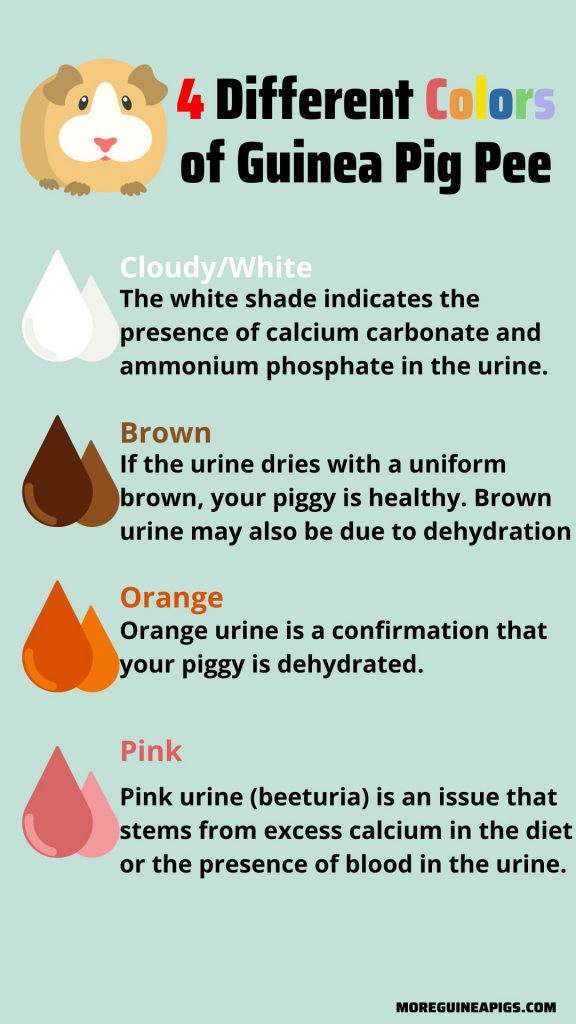
Milky yellow: A milky yellow shade in your piggy’s urine is a sign that the diet contains too much calcium, and the animal may develop calciuria sometime in the future.
Just switch to a low-calcium diet and you will notice a difference. If the guinea pig has alfalfa hay, consider switching to timothy hay.
White: As we have already stated, white urine can mean that your piggy is consuming too much calcium-rich food, and the excess calcium is being excreted via the urine.
Bright yellow: It’s normal. As long as your piggy eats and drinks well, don’t worry about the bright yellow shade in the urine.
Red: Some particular food items such as beetroot, dandelion, carrot, and red cabbage can be responsible for a red tint in your guinea pig’s urine.
This red pigmentation can also be caused by antibiotic medicines. During winters, a sudden drop in temperatures can also cause this problem.
It is to be noted here that many people mistake red urine for blood. If untreated for a long time, this issue can lead to serious health complications.
Brown: If the pea is brown, usually it is not a matter of concern. It can be caused by bladder pigments. In older pigs, brown colored urine is often accompanied with constipation. Your piggy most probably has constipation if the fecal waste sticks in the gut.
Pink: A guinea pig’s urine may look pink if blood is present in it. It can also be caused by excess calcium in the diet. Eating cranberries and strawberries can also be responsible for the problem.
Orange: An orange shade in the urine is mainly caused by dehydration. Pigmentation can also make the urine look orange. Just make sure your piggy is adequately hydrated and the orange tint will go away.
A host of diseases can be prevented just by identifying the color of your piggy’s urine. White litter can help you identify the urine color.
In Short
Paying attention to the color of your guinea pig’s urine can be an effective way to learn about the overall health of the animal.
If the urine looks white and you let the condition go untreated for a long time, eventually it may lead to serious issues such as bladder stones.
As long as the condition is in its initial stages, you can address the issue just by reducing the amount of calcium-rich food in the diet.







